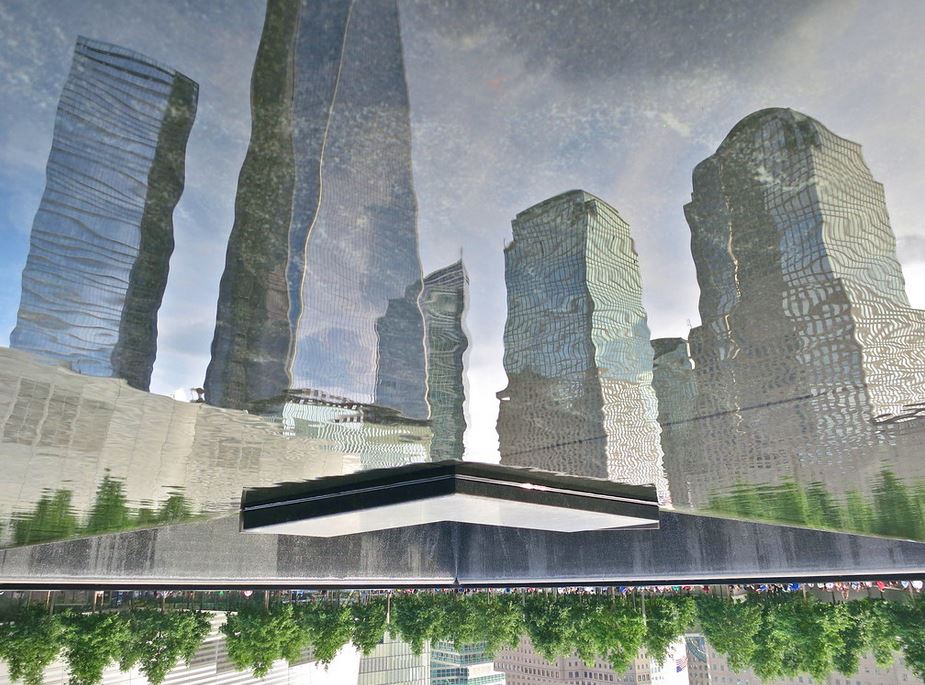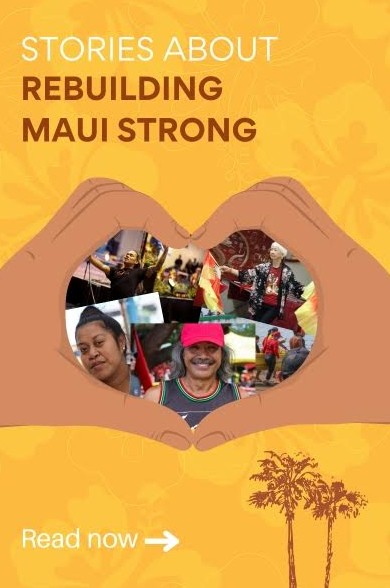By Russell Leung, AsAmNews Intern
Charlie Lai had just emerged from the subway on September 11, 2001, when he saw papers flying through the air.
He and his wife could hear people nearby talking about a plane hitting the World Trade Center. He could not believe that something so terrible could happen—until he experienced it firsthand.
“I was like, ‘Are you kidding me?’ Nobody’s that stupid,” Lai told AsAmNews. “And literally 10, 15 seconds after I made that statement, there was another loud boom. That was from the second plane that hit the World Trade Center.”
Lai and his wife were standing just two blocks away from the World Trade Center. Realizing that they were under attack, they quickly escaped the area by foot. Even through the dust, in his peripheral vision he could see the building collapse in flames.
But the devastation, Lai noted, was not limited to the Financial District. In the weeks, months, years afterward, the nearby Chinatown community, located just over a mile from the World Trade Center, dealt with health issues, empty streets and severe economic hardship.
Lai, as the then-director of policy and programs at the Asian American Federation, worked with outside charities and organizations like Safe Horizon to secure aid for the neighborhood. But it was difficult, he said, to earn sufficient attention for such a traditionally marginalized community.
“Chinatown’s voices were smaller in comparison to the larger entities. And so we needed to make our voices heard to bring those resources into Chinatown,” Lai said. “Because we were summarily dismissed.”
In that same vein, Chinatown residents were not afforded the opportunity by major news outlets to tell their stories. So in the years following 9/11, local organizations collaborated to archive their experiences through initiatives like oral history and education. Key participants in these projects spoke with AsAmNews about their unique stories, their involvement in these projects and why 9/11 is a critical event in Chinatown history.
Shining a light on the darkest day
Teri Chan first grew interested in oral history as a child. Having lived in China until she was 11, Chan often witnessed her grandmother and others entertaining the village through storytelling. As a teenager, she enrolled in several Chinatown programs that trained her in the practice.
Chan, then, was a natural fit to be an interviewer for a community 9/11 oral history initiative. She spoke with Chinatown residents about their memories of that fateful day and the ensuing fallout for Ground One: Voices From Post-9/11 Chinatown, a collaboration between the Museum of Chinese in America (MOCA), Columbia University Center for Oral History Research, September 11 Digital Archive and New York University Asian/Pacific/American Institute.
Chan, who was a special events manager and assistant to the executive director for the Chinese-American Planning Council at the time, also lived in Chinatown when the September 11 attacks occurred. Although she survived with no injuries, she recalled being “in shock” as her workplace hosted people displaced by the destruction that day.
That experience, she said, helped inform her interviews. She asked questions that she hoped would help an audience truly understand the events that occurred.
“When I was interviewing people, I felt like we were sharing part of this history and that’s why I knew the interview was so important,” Chan said. “The oral history is a moment in time that people can look back on and know what it felt like to live in Chinatown and work in Chinatown and to experience that period.”
The tragic and unprecedented nature of the attacks and its effects on Chinatown, Chan said, made it important for historians to capture. She compared the situation to “wartime,” with combat being replaced by acts of terror.
But when Chan spoke to fellow 9/11 survivors from Chinatown, she said, she discovered an unexpected silver lining.
“One thing that struck me as extraordinary was people in Chinatown were very resilient, especially the older generation,” Chan said. “They’ve really been through extreme poverty, they immigrated from China to the United States and a lot of times, they had nothing. So I felt like they had an optimistic outlook that was surprising to me because despite this current situation, how bad in shape Chinatown was.”
Much of that resilience manifested as local organizing in the wake of the attacks. David Chen, the former executive director of the Chinese-American Planning Council who was interviewed by Chan for Ground One, worked with various nonprofits to bring resources and financial relief to Chinatown.
Like Lai, he found it challenging to bring necessary resources and relief to Chinatown, a place he said has always been “misunderstood.” He recalled a tense meeting with the Red Cross, whose representatives asked if the community could supply any volunteers.
“I almost wanted to give them a scolding. I said, ‘How do you find volunteers for the community when we are devastated in that situation?’ No jobs, no housing, no phone, no electricity, and you want volunteers? And then they said, ‘What do I need?’’ Chen told AsAmNews. “Right now, economics, people are not getting jobs. If you can hire some of these people so they help people, that’s a job.”
Dr. Sun-Hoo Foo, a neurologist who has worked in Chinatown for decades, was also interviewed for the oral history project. As soon as he heard about the attacks, he quickly commuted from New York University to Chinatown so that he could help injured people in the local hospital.
But while 400 people showed up within half an hour to the emergency room, Foo told AsAmNews, the hospital was facing its own challenges and isolation during the crisis.
“Everything is diverted out of Chinatown because there’s no electricity, there’s no water in that area. So patients that got sick from other places couldn’t get down,” Foo said. “The community is like a war zone, nothing we can do. And so what we can do, the hospital, is to help the neighbors, so that they can have food and water.”
In the aftermath of 9/11, he and other local doctors coordinated efforts to connect and provide the community with healthcare during the crisis.
Because Foo didn’t suffer significant personal loss, he didn’t find it painful to speak about his experience, he said, whereas other unlucky people suffered from the horrors of the attacks.

Processing the devastation
Lai, a co-founder and former executive director of MOCA, is among those who struggled to move forward from that day. Being so close to the chaos of the day made a psychological imprint on him: for a long time, even the sight of smoky chimneys made him nervous, and he could not bring himself to visit Ground Zero until just a few years ago.
“It’s difficult to talk about it, because I actually traveled through the World Trade Center for a long time almost every day, because that’s on my way to work. And so like I’m in the middle of it, at the same time not, because it’s like a compartmentalization. And of course, it’s now the day before the 20th (anniversary of 9/11), and I saw an image of the World Trade Center and the smoke, and it brings me back to the early days and it created a knot in my stomach,” Lai said. “In that sense, the trauma of that day continues.”
As the museum’s executive director during the post-9/11 period, Lai focused not only on helping MOCA but also its Chinatown community prosper. When the local economy faltered, Lai said, he wanted MOCA to help bring back visitors in a way that would cement Chinatown’s status as a cultural destination rather than a mere tourist trap.
So in addition to securing the funds for MOCA to move to a larger space in the neighborhood, he supported its efforts to create a record of that era.
“We were very much looking at documenting the history and wanting to present it to the community, and then bringing people into Chinatown to have a much more authentic understanding of our Chinese American journey,” Lai said. “That is part of the American journey, who we are as a country.”
The documentation efforts extended beyond Ground One to include a partnership with a nearby middle school, whose students conducted their own oral history projects by interviewing older Chinatown residents and creating art in response. Beatrice Chen, who was the museum’s curator of education at the time, coordinated the initiative; she told AsAmNews that oral history is an important documentation tool because people with lived experiences have just as much knowledge as academics who study those experiences.
The students, through the project, were encouraged to write their living history by telling their own stories, Chen said. That was a significant notion in the context of a culture that typically employs stoicism in the face of adversity, rather than encouraging opening up about personal struggles.
“Oral history is quite healing, and also it gives you some sort of coping mechanism,” Chen said. “There’s so much stigma around mental health and therapy, especially in the immigrant community. I think using oral history is a good way to help them and give them space to process and talk about it.”
September 11 provided a lot to process, even for younger Chinatown residents, because of its debilitating effect on the economy. Sherman Ng, a retired businessman, told AsAmNews that 9/11 especially devastated the already declining local garment industry. As a former owner of a garment business, he scrambled during September 11 to preserve the garments in factories and warehouses located near the World Trade Center.
Over the years, he said, financial losses from domestic products compelled him to opt for cheaper overseas imports. Now, garment centers are all but gone from the neighborhood.
“We had been fighting for work to stay domestic, but what can you do? As a businessman like me, I had to make a living. So I had to go elsewhere,” Ng said. “Although I am very personally in-touch with Chinatown, sometimes what are you going to do? I didn’t want to go there. But we had no choice.”

Present-day challenges for Chinatown
Ng’s conflict embodies a tension within many Chinatown community members between a deep affinity for the area and a sense that the neighborhood never recovered from 9/11 and continues to struggle today.
Chen said that the community still needs to absorb and educate others on the lessons of September 11.
“Few people realize what we can learn from (September 11) is something that can help to prevent and avoid and guide the future. That’s, I believe, history. If you don’t understand history and find a way to deal with it, you cannot really handle the future in a learned way,” Chen said.
Although the devastation that 9/11 caused for Chinatown was unprecedented at the time, it parallels that of another catastrophe that currently threatens the neighborhood: the COVID-19 pandemic. In both cases, Chinatown emptied out due to concerns over health and safety, and shops and restaurants suffered enormous losses as a result.
Despite Chinatown’s embrace of practices like masking and vaccination, the pandemic has forced beloved businesses like Jing Fong, the largest restaurant in Manhattan, to shutter due to a lack of revenue. Widespread discrimination and violence against Asian Americans during the pandemic have also deeply impacted the area.
And unlike twenty years ago, Chan said, Chinatown is no longer such a strong community. Gentrification, including skyrocketing rent, and a shrinkage of the neighborhood have caused residents to move out.
But there is still hope for the Chinese American population. Those same residents who departed Chinatown helped grow new Chinatowns across the city. Even if Manhattan Chinatown is eventually reduced to history, Chan is confident that just like after September 11, its people will find a way to thrive.
“I just hope that people will get a chance to read some of the oral history and remember the tragedy that happened and also impacted Chinatown,” Chan said. “It’s very sad that Chinatown is shrinking, but I’m also optimistic that the Chinese people expanded elsewhere. Chinatown may die in one location, but as long as there are Chinese people, we can always create Chinatown elsewhere.”
AsAmNews has Asian America in its heart. We’re an all-volunteer effort of dedicated staff and interns. Check out our new Instagram account. Go to our Twitter feed and Facebook page for more content. Please consider interning, joining our staff, or submitting a story or making a contribution.





Russell and Randall
February 2002, I broadcast a half hour documentary on the devastation in NYC Chinatown post 9/11 for WNBC-TV. It won an Emmy.
The only copy sits in a box in a WNBC-TV warehouse in New Jersey. If the Asian American Federation or MOCA requests it, it could get a copy.
Ti-Hua Chang